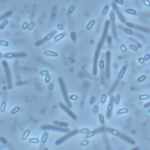Link to Pubmed [PMID] – 16804543
Nat. Genet. 2006 Jul;38(7):779-86
We determined the complete genome sequence of Clostridium difficile strain 630, a virulent and multidrug-resistant strain. Our analysis indicates that a large proportion (11%) of the genome consists of mobile genetic elements, mainly in the form of conjugative transposons. These mobile elements are putatively responsible for the acquisition by C. difficile of an extensive array of genes involved in antimicrobial resistance, virulence, host interaction and the production of surface structures. The metabolic capabilities encoded in the genome show multiple adaptations for survival and growth within the gut environment. The extreme genome variability was confirmed by whole-genome microarray analysis; it may reflect the organism’s niche in the gut and should provide information on the evolution of virulence in this organism.

